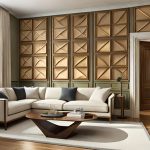Introduction to Bed Frame Materials
When it comes to creating a comfortable and stylish bedroom, choosing the right bed frame material is more important than you might think. The bed frame not only supports your mattress but also plays a major role in the overall look and feel of your space. In the U.S., two of the most popular choices are wood and metal bed frames, each bringing its own set of strengths and unique appeal. Before you settle on one, it’s essential to consider how these materials will impact durability, style, and even your daily comfort. This guide will help you weigh the pros and cons of wood versus metal bed frames so you can decide which is truly best for your home.
Wood Bed Frames: Pros and Cons
When it comes to choosing a bed frame for your American home, wood bed frames have always been a classic favorite. Their natural look and sturdy construction make them a popular choice across the United States. However, like any furniture option, they come with their own set of benefits and drawbacks. Let’s break down what makes wood bed frames a great—or not so great—option for your bedroom.
Advantages of Wood Bed Frames
Wood bed frames offer several advantages that appeal to homeowners seeking both style and functionality. Here are some key pros:
| Advantage | Description |
|---|---|
| Durability | Solid wood frames, especially those made from hardwoods like oak or maple, can last for decades with proper care. They’re robust enough to handle daily use and can withstand the demands of busy households. |
| Style Variety | Wood offers a timeless aesthetic that fits many American home styles, from rustic farmhouse to sleek modern. You can choose different finishes, stains, and carvings to match your interior décor. |
| Customization | It’s easy to paint, stain, or refinish wood frames if you want to update your room’s look or repair minor scratches and dents over time. |
| Sustainability | For environmentally-conscious consumers, many U.S. furniture makers offer sustainably sourced wood options, reducing environmental impact. |
Disadvantages of Wood Bed Frames
No product is perfect—wood bed frames have their challenges too. Here’s what you should consider:
| Disadvantage | Description |
|---|---|
| Maintenance Needs | Wood requires regular dusting and occasional polishing. In humid climates commonly found in regions like the Southeast or Pacific Northwest, wood may warp or crack if not properly maintained. |
| Pest Risk | Although rare in most American homes, untreated wood can attract termites or other pests, especially in older houses or rural settings. |
| Weight and Portability | Solid wood frames tend to be heavy and difficult to move. This can be inconvenient during moves or when rearranging furniture. |
| Cost | High-quality hardwood bed frames often come with a higher price tag compared to metal alternatives, which may impact your budget. |
Is a Wood Bed Frame Right for Your American Home?
If you value durability, classic aesthetics, and customization options—and don’t mind investing in maintenance—a wood bed frame can be an excellent centerpiece for your bedroom. However, if ease of care and portability are priorities for your household, you might want to weigh these pros and cons before making a decision.

3. Metal Bed Frames: Pros and Cons
Metal bed frames have steadily gained popularity across American homes, offering a sleek alternative to traditional wood. Style-wise, metal frames are incredibly versatile, fitting seamlessly into everything from modern lofts to industrial-chic bedrooms. Their clean lines and variety of finishes—like matte black, brushed nickel, or antique bronze—make them an attractive choice for those seeking a contemporary look. Cost is another major factor: metal frames tend to be more budget-friendly than solid wood options, making them accessible for first-time homeowners or those looking to furnish a guest room without breaking the bank.
When it comes to stability and durability, metal frames can be both a blessing and a curse. High-quality steel frames are sturdy and often built to last, resisting warping and cracking over time. However, lower-end models may squeak or shift with movement, especially if not properly assembled—a common complaint among American renters and college students alike. Additionally, while metal is naturally resistant to pests like termites, it can be prone to rust in humid climates unless coated with protective finishes.
For American households with specific needs, there are some important considerations. Families with young kids should note that sharp corners on some metal designs could pose safety risks. On the other hand, allergy sufferers might appreciate that metal doesn’t harbor dust mites as easily as upholstered or wooden frames. Lastly, moving a metal frame is generally easier due to its lighter weight, which is ideal for apartment dwellers or frequent movers.
In summary, while metal bed frames offer affordability and modern aesthetics, buyers should weigh these benefits against potential downsides like noise issues and climate concerns before deciding what’s best for their home.
4. Style and Design Considerations
When deciding between wood and metal bed frames, it’s essential to consider how each material fits into popular U.S. interior design styles. The right choice can either complement or clash with your home’s overall aesthetic. Below is a comparison of how wood and metal bed frames align with three trending styles: farmhouse, modern, and industrial.
| Design Style | Wood Bed Frames | Metal Bed Frames |
|---|---|---|
| Farmhouse | Wood is the go-to material for farmhouse bedrooms, offering warmth, rustic charm, and a welcoming vibe. Distressed finishes and natural grains enhance authenticity. | While less common, matte black or white-painted metal frames can work if you prefer a slightly more contemporary farmhouse feel. |
| Modern | Sleek, minimalist wooden frames in lighter stains or painted finishes can fit modern spaces, but they tend to bring a softer edge to the room. | Metal frames are often favored in modern interiors for their clean lines and streamlined appearance. Chrome or matte finishes add a touch of sophistication. |
| Industrial | Rough-hewn or reclaimed wood beds are popular in industrial settings when paired with exposed brick or concrete walls. They add texture and warmth to balance hard surfaces. | The quintessential industrial look features metal bed frames—think pipe-style designs or dark steel finishes that highlight an urban loft vibe. |
Ultimately, your choice should reflect both your personal taste and the style of your home. If you love cozy and traditional looks, wood may be your best bet. For those drawn to crisp, urban, or eclectic spaces, metal offers versatility and visual impact. Mixing materials is also on-trend—don’t be afraid to combine wood and metal elements for a unique statement piece that bridges multiple design aesthetics.
5. Durability and Maintenance
When it comes to choosing between wood and metal bed frames, durability is a big factor for American households that want their furniture to last for years. Let’s break down how each material stands up over time, plus what it takes to keep them looking and functioning their best.
Wood Bed Frames: Classic Strength with Some TLC
Solid wood frames are known for their sturdiness—especially when crafted from hardwoods like oak, maple, or cherry. However, wood can be sensitive to changes in temperature and humidity, which may cause warping or cracking if not properly maintained. Over the years, you might notice scratches or dings from everyday use, but these can often be sanded out or touched up with wood stain. To maintain a wood frame, dust regularly, wipe up spills promptly, and occasionally apply furniture polish or wax to preserve its finish. Avoid placing your frame in direct sunlight or next to heating vents to prevent fading and drying.
Metal Bed Frames: Toughness Meets Simplicity
Metal bed frames—whether made of steel, iron, or aluminum—are generally more resistant to daily wear and tear. They don’t warp or crack like wood can, making them an excellent choice for homes with fluctuating climates or for anyone who moves frequently. Most metal frames come with a protective coating to ward off rust; just make sure not to scratch the finish. Cleaning is simple: wipe down with a damp cloth and mild soap as needed. For long-term care, check bolts and screws periodically to ensure everything stays tight and squeak-free.
Wear and Tear: What’s Typical?
Both types of bed frames can loosen over time if they’re repeatedly moved or heavily used—think kids jumping on the bed or frequent rearranging. Wooden joints may need occasional tightening or re-gluing, while metal frames might require bolt adjustments. In general, though, well-made wood frames can last decades with attentive care, while metal frames are prized for surviving heavy use with minimal fuss.
Quick Maintenance Tips:
- For wood: Use coasters under drinks, clean up spills fast, and avoid harsh cleaners.
- For metal: Watch out for chipped paint (which can lead to rust), and keep hardware snug.
No matter your choice, regular maintenance will keep your bed frame sturdy and looking great—ensuring your investment goes the distance in your American home.
6. Budget and Value
When deciding between a wood or metal bed frame, budget is often a top concern for American shoppers. Generally, metal bed frames are more affordable up front, making them an attractive choice for college students, first-time renters, or anyone looking to furnish a guest room without breaking the bank. Wooden bed frames, especially those made from solid hardwoods like oak or maple, tend to have higher price tags. However, they also offer greater longevity and can increase in value over time, particularly if theyre well-maintained or become vintage pieces. If you’re seeking long-term investment and classic appeal, the extra cost of a quality wooden frame may pay off in durability and style. On the other hand, if you’re on a tight budget or like to update your décor frequently, a metal frame might be more practical. Many Americans find a balance by setting a clear spending limit before shopping and considering both immediate costs and long-term value. Think about how often you move, your current stage of life, and whether you plan to keep the same furniture for years to come—these are key factors that should guide your purchase decision based on typical American spending habits.
7. Conclusion: Which is Right for Your Home?
Choosing between a wood or metal bed frame ultimately depends on your personal style, budget, and lifestyle needs. Wooden bed frames offer timeless warmth, durability, and can suit both rustic and modern decor styles. They tend to be quieter and provide a sturdy feel, making them perfect for those who value comfort and traditional aesthetics. On the other hand, metal bed frames are usually more affordable, lightweight, and easy to assemble or move, which is ideal for renters or anyone who frequently rearranges their space. They also come in sleek designs that complement contemporary interiors. When deciding, consider factors such as your bedrooms design theme, how much weight the frame needs to support, your long-term plans for your home, and any maintenance preferences. If you want a classic look with lasting value and don’t mind a little extra care, wood might be your best bet. If you prefer a minimalist look, need something budget-friendly or easy to maintain, metal could be the right choice. Ultimately, the best bed frame material is one that fits seamlessly into your life and helps create the restful retreat you deserve.

